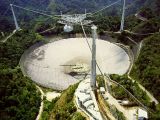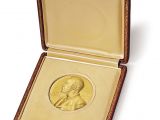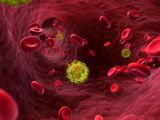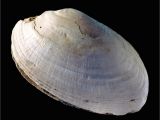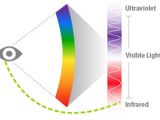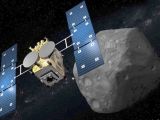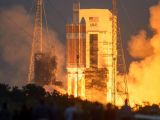Yet another week has gone by, be it in the blink of an eye for some people or at an infuriatingly slow pace for others, and once again, it's time to sit back, relax, and browse through the most important science news and announcements of the past few days.
Just for the record, it must be said that this week was pretty darn amazing, at least as far as the world of science is concerned. But don't take our word for granted. Just keep scrolling to see for yourselves just how much fun brainiacs got to have since we last checked up on their working agenda.
10. Atomic hydrogen detected 3 billion light-years away
This week, scientists announced that, with the help of the Arecibo Observatory in Puerto Rico, they managed to detect the presence of atomic hydrogen gas, which fuels star formation processes, in nearly 40 distant galaxies.
More precisely, the researchers zoomed in on atomic hydrogen gas floating about galaxies located at a distance of about 3 billion light-years away from our planet.
That's right, they detected atomic hydrogen in cosmic neighborhoods that light, which travels at a speed of about 300,000,000 meters per second / 985,000,000 feet per second, would take 3 billion years to reach.
It is understood that this study broke the previous record for space exploration by about 500 million light-years. True, the discovery isn't going to change our life in any way, but it's pretty impressive nonetheless.
9. Obesity found to cut 8 years off a person's life
A computer model made it possible for researchers to investigate how being overweight or downright obese influences lifespan and what they discovered is nothing short of troubling.
Thus, evidence at hand indicates that extremely obese folks risk having their life cut short by as much as 8 years. Obese and overweight individuals, on the other hand, risk losing up to 6 and 3 years of life, respectively.
Even more worrying, specialists say that, when the risk to develop cardiovascular disease or diabetes is also factored in, it can happen for obese people to have their life expectancy cut by an impressive 2 decades.
8. DNA discoverer auctioned off his Nobel gold medal
This week, James Watson auctioned off the Nobel medal that was awarded to him back in 1962 for the discovery of the double-stranded structure of DNA, a molecule that encodes the genetic instructions organisms need to develop and grow.
The molecular biologist's Nobel Prize gold medal, a photo of which is included in the gallery below, sold for a record $4.76 million (€3.85 million) to an anonymous buyer who bid for it by phone. In case anyone was wondering, the auction was held in New York City, US.
The scientist's notes for his Nobel acceptance speech, together with the draft for a lecture he delivered after the ceremony, were auctioned off as well. According to auction house Christie's, they sold for $365,000 (€296,000) and $245,000 (€198,000), respectively.
7. HIV found to be less virulent, take longer to cause AIDS
In a paper that hit the public eye this past week, scientists argue that HIV is now less virulent than it used to be. What this means is that, following infection, the virus takes longer to progress to AIDS.
Specialists believe that HIV turned less virulent because, while training itself to the able to resist a naturally-occurring protein in the human body that can harm it, it lost its ability to replicate quickly and without too much difficulty.
Interestingly enough, researchers argue that antiretroviral therapy can have the same effect on the virus. Thus, they say that, while evolving to be able to deal with drugs that are a threat to it, it is possible for HIV to lose its virulence.
6. World's oldest doodle discovered on a shell in Indonesia
Some 500,000 years ago, an either really bored or really artsy individual picked up a shell and decorated it with a zigzag pattern. The shell, discovered on the island of Java in Indonesia not too long ago, is now hailed as the world's oldest doodle.
It is believed that this ancient doodle was created by a Homo erectus. This species emerged roughly 2 million years ago in Africa, and shortly after, went walkies across the globe. Archaeological evidence indicates it even made it all the way to Indonesia.
Homo erectus is said to have gone extinct approximately 140,000 years ago. Having analyzed fossilized remains left behind by this species, some researchers labeled Homo erectus the direct ancestor of both Neanderthals and humans.
5. Ultrasound used to create invisible sphere in mid-air
Contrary to what some might assume, science experiments can be loads of fun. For instance, it was earlier this week that brainiacs announced that, by toying with ultrasound, they managed to create an invisible sphere that could be felt.
In a paper detailing these experiments, specialists explain that, to create their virtual sphere which, although invisible to the naked eye, could be detected using touch, they created complex ultrasound patters and used them to birth air disturbances.
It was these air disturbances that took the shape of a sphere, they go on to detail. It's important to note that, although this study focused on a sphere, ultrasound can be used to create all sorts of invisible three-dimensional shapes.
The scientists behind this research project hope their work will pave the way for the development of touchable holograms, maybe even make it possible for surgeons to feel a virtual representation of a tumor before actually operating on a patient.
4. Humans found to be able to detect infrared light
For a very long while, the human eye was believed to be incapable of detecting infrared light, which science books describe as being outside our visual spectrum. More precisely, it was said that humans could only detect it with the help of high-tech equipment.
The thing is that, by the looks of it, the human eye is very much able to pick up on infrared light. In order for this to happen, pairs of infrared photons must hit and engage the same pigment in the eye at nearly the same time, specialists say.
Evidence indicates that, whenever this happens, the energy delivered by the two individual infrared photons combines and the retina behaves as if it just had a regular photon belonging to the visible spectrum reach it.
If we're going to be honest here, it must be said that learning that the human eye can sometimes detect infrared light is kind of like learning that we all have a secret superpower. Pretty cool, right?
3. Japan launched a spacecraft to an asteroid
Towards the beginning of this week, scientists in Japan announced that their Hayabusa2 spacecraft had successfully been launched from the country's Tanegashima Space Center and was en route to an asteroid.
The spacecraft is expected to reach asteroid 1999 JU3 sometime in 2018. It will deploy a lander and three rovers, and will even go as far as to fire a metal bullet into the space rock, the Japanese Aerospace Exploration Agency details.
The metal bullet will hit the asteroid at a speed of about 7,200 kilometers per hour (4,500 miles per hour) and should create a fairly impressive crater from which Hayabusa2 will collect rock samples.
Word has it that these samples collected from deep inside 1999 JU3 will reach Earth in 2020. Scientists will get busy studying them in an attempt to gain a better understanding of the formation and the evolution of our Solar System.
2. World's largest telescope approved for construction
This week, the European Southern Observatory announced that, sometime towards the beginning of the next decade, the world's largest telescope would become operational in Chile's Atacama Desert, atop a mountain dubbed Cerro Armazones.
The installation, which will bear the name the European Extremely Large Telescope, got its official construction go-ahead during a recent meeting of the European Southern Observatory's main governing board.
Apart from all sorts of instruments that will make it possible for scientists to probe the depths of space, the optical/near-infrared telescope will sport a 39-meter (128-feet) main mirror and a 4-meter (13-feet) secondary mirror, information shared with the public says.
Scientists say that, when up and running, the European Extremely Large Telescope will offer a new insight into the makeup of distant galaxies and will provide new data about black holes and dark matter. The telescope will also help discover new planets.
1. NASA's Orion spacecraft completed its maiden voyage
This week, NASA's Orion spacecraft, which researchers hope will one day carry astronauts all the way to Mars, successfully completed its maiden voyage. The flight went smoothly, and after returning to Earth, the spacecraft was almost immediately recovered.
Orion left Earth on December 5, at precisely 7:05 a.m. EST, atop a Launch Alliance Delta IV Heavy rocket sent into space from Florida's Cape Canaveral Air Force Station. The launch was supposed to take place on December 4, but was postponed due to bad weather and technical trouble.
Having left the ground, Orion soared to an altitude of 3,604.2 miles (5,800.3 kilometers) before pulling the plug on its space adventure and returning to Earth. As planned, the spacecraft landed in the Pacific Ocean and was recovered by the crew aboard two US Navy vessels.
While in space, NASA's Orion spacecraft circled our planet twice, reached a top speed of 25,000 miles per hour (40,200 kilometers per hour), passed through the Van Allen radiation belts, and was exposed to temperatures twice as hot as molten lava.
The spacecraft did not have any astronauts aboard when it performed this journey, but it carried tens of thousands of sensors that served to document every detail of the flight. NASA scientists are now busy gathering and processing the data.
This most exciting piece of news concludes this week's round-up. If you're one of those people who like to keep tabs on what scientists are up to in this day and age, be sure to check this page again next Sunday.
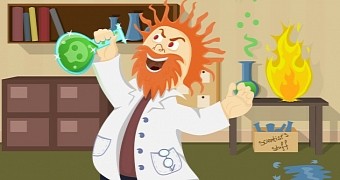
 14 DAY TRIAL //
14 DAY TRIAL // 
